Leadership and Management: Approaches for Change Implementation
VerifiedAdded on 2022/10/10
|6
|680
|397
Essay
AI Summary
This essay delves into the critical distinction between leadership and management in the context of implementing change projects. It examines the roles of managers, who focus on planning and organization, and leaders, who inspire and motivate. The essay references Kotter's (2001) view that leaders formulate strategies while managers set procedures and highlights key differences between the two roles, such as risk assessment and vision communication. It then explores Kotter's eight-step change model (1996), outlining steps for successful change management. Furthermore, the essay emphasizes the importance of the manager-employee relationship and the various roles managers play during change, including mentor, communicator, and advocate. The concept of collective leadership is introduced, highlighting its benefits in fostering communication and shared accountability. The essay also addresses the challenges of managing change in pluralistic organizations, such as those involving unions, and stresses the need for supervisors to effectively communicate the necessity of change. This analysis provides valuable insights into how different leadership styles and approaches influence the successful implementation of change initiatives.
1 out of 6
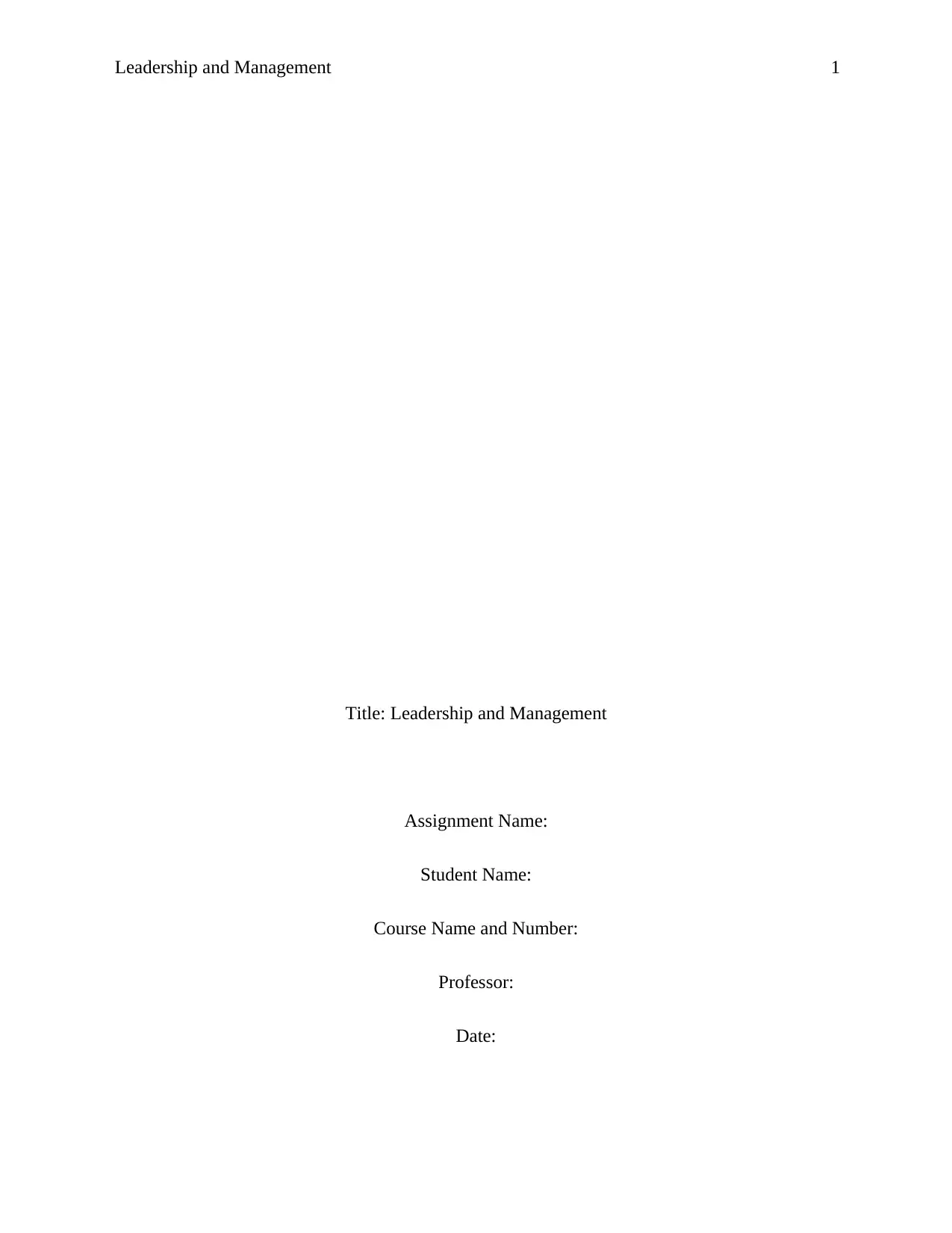
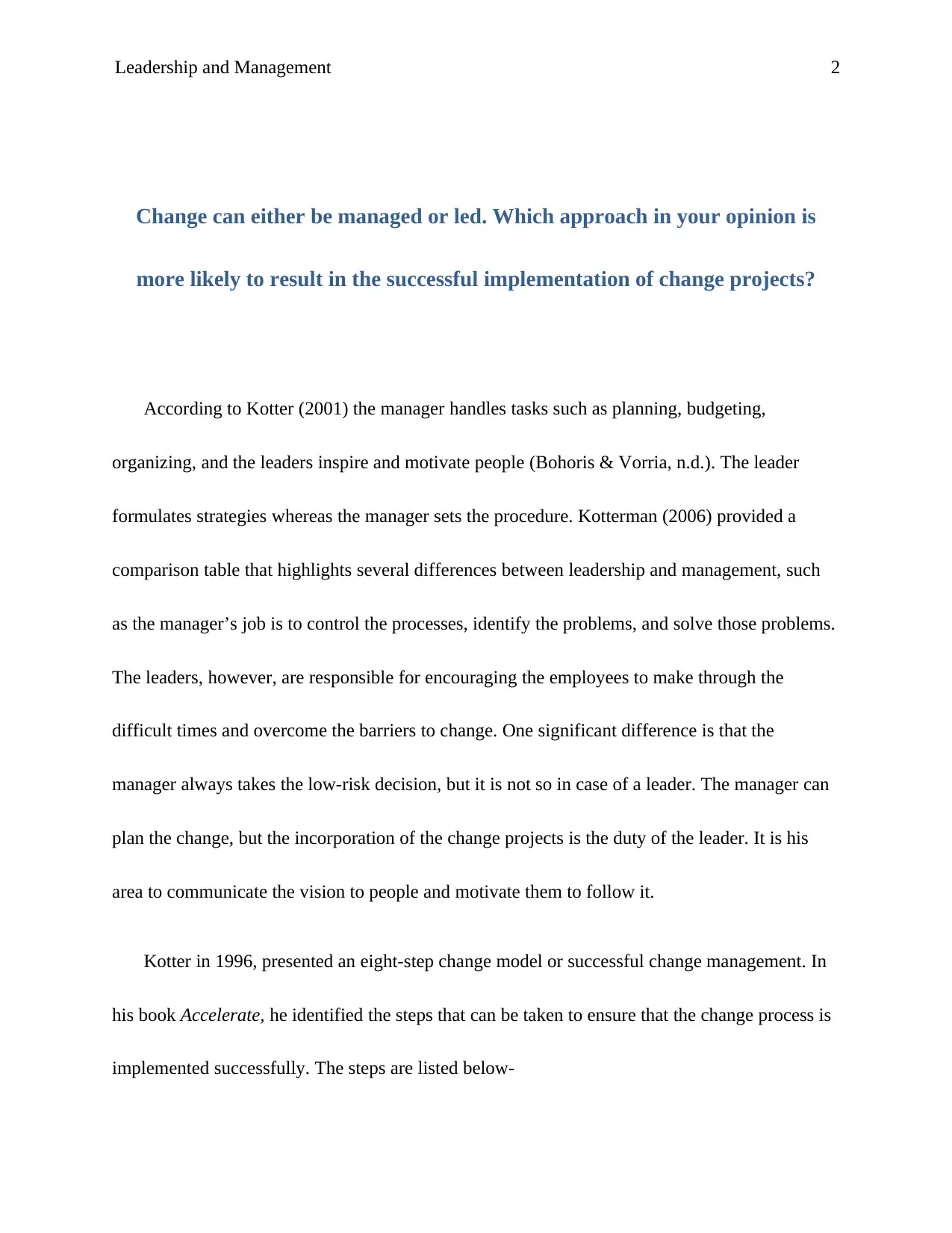
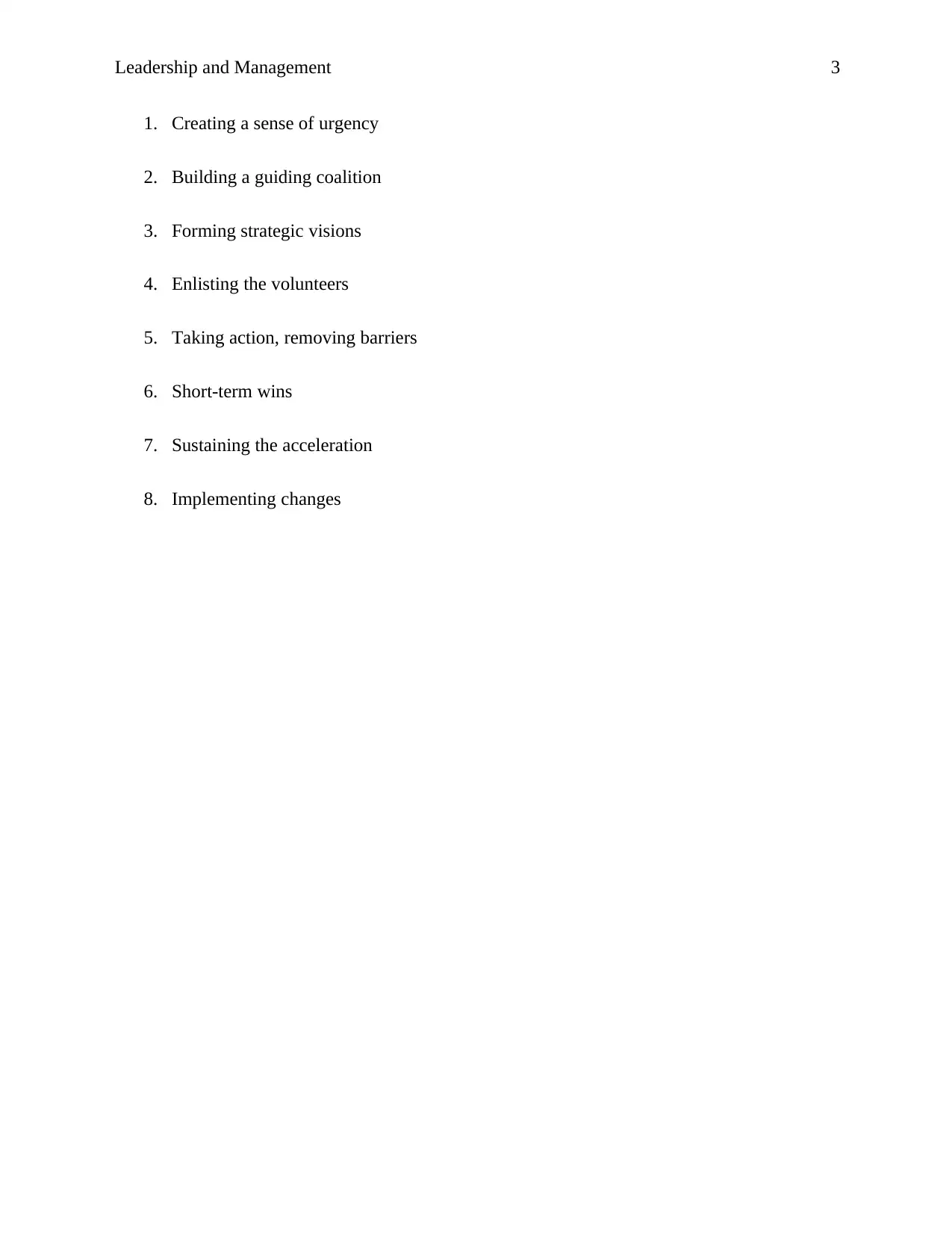

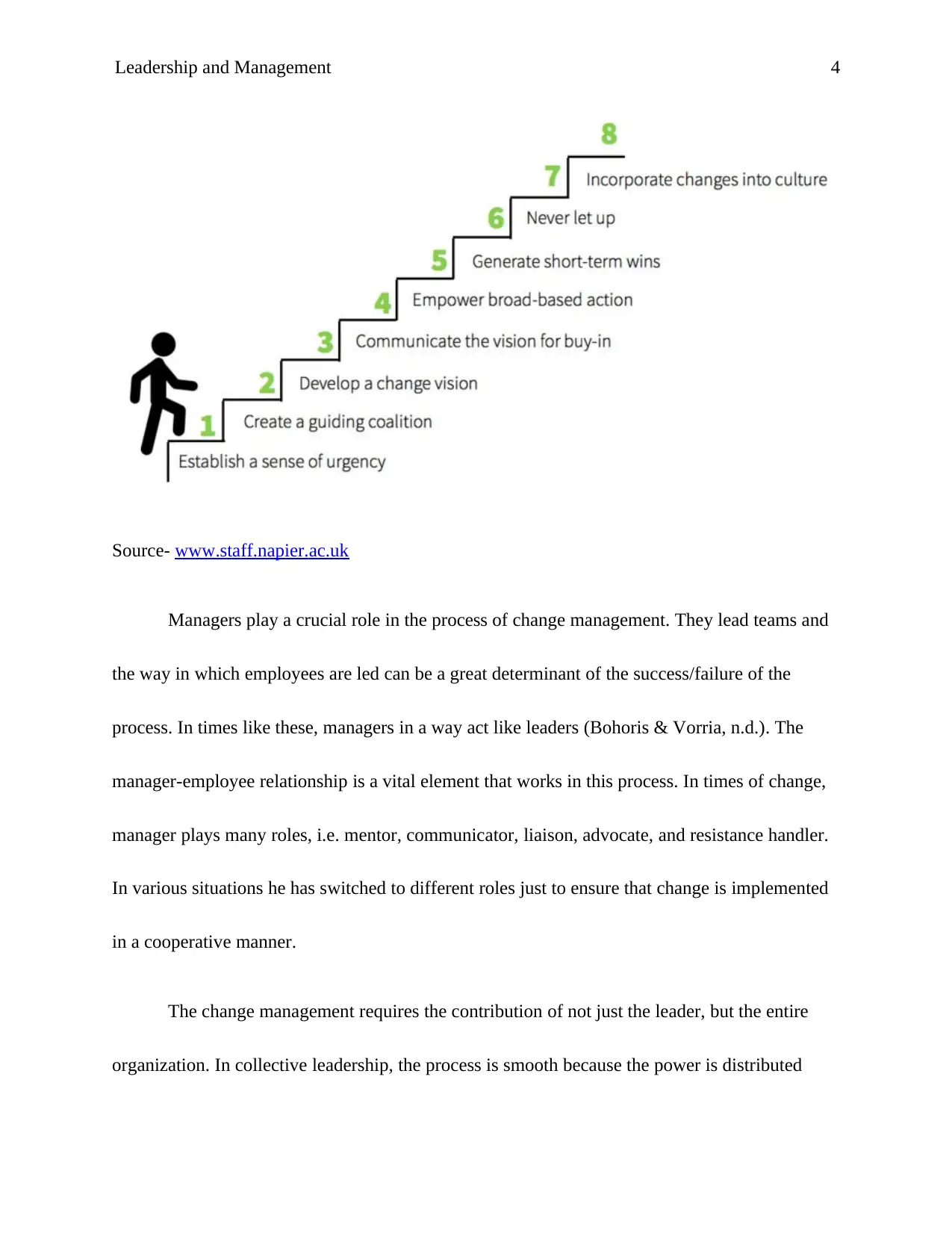
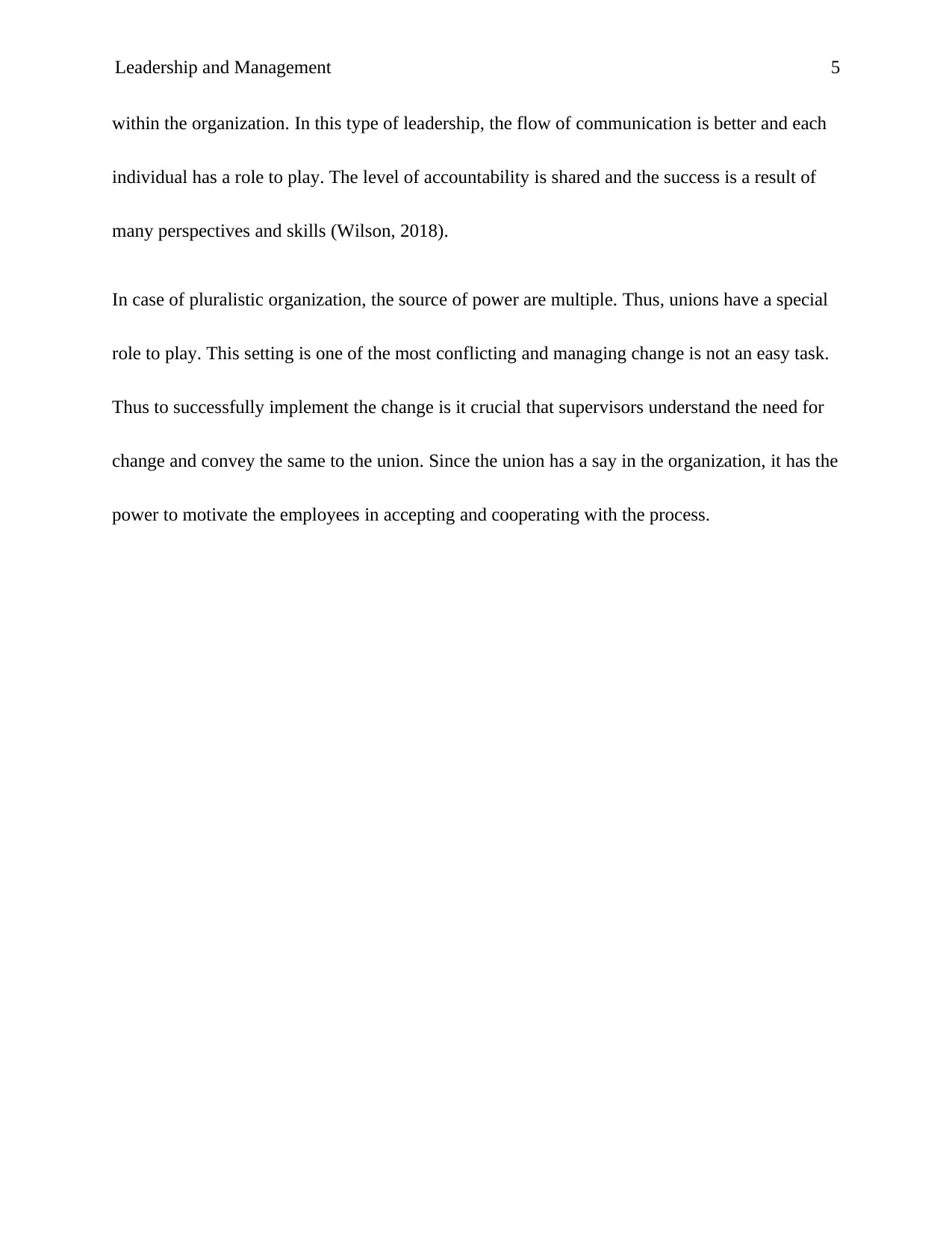
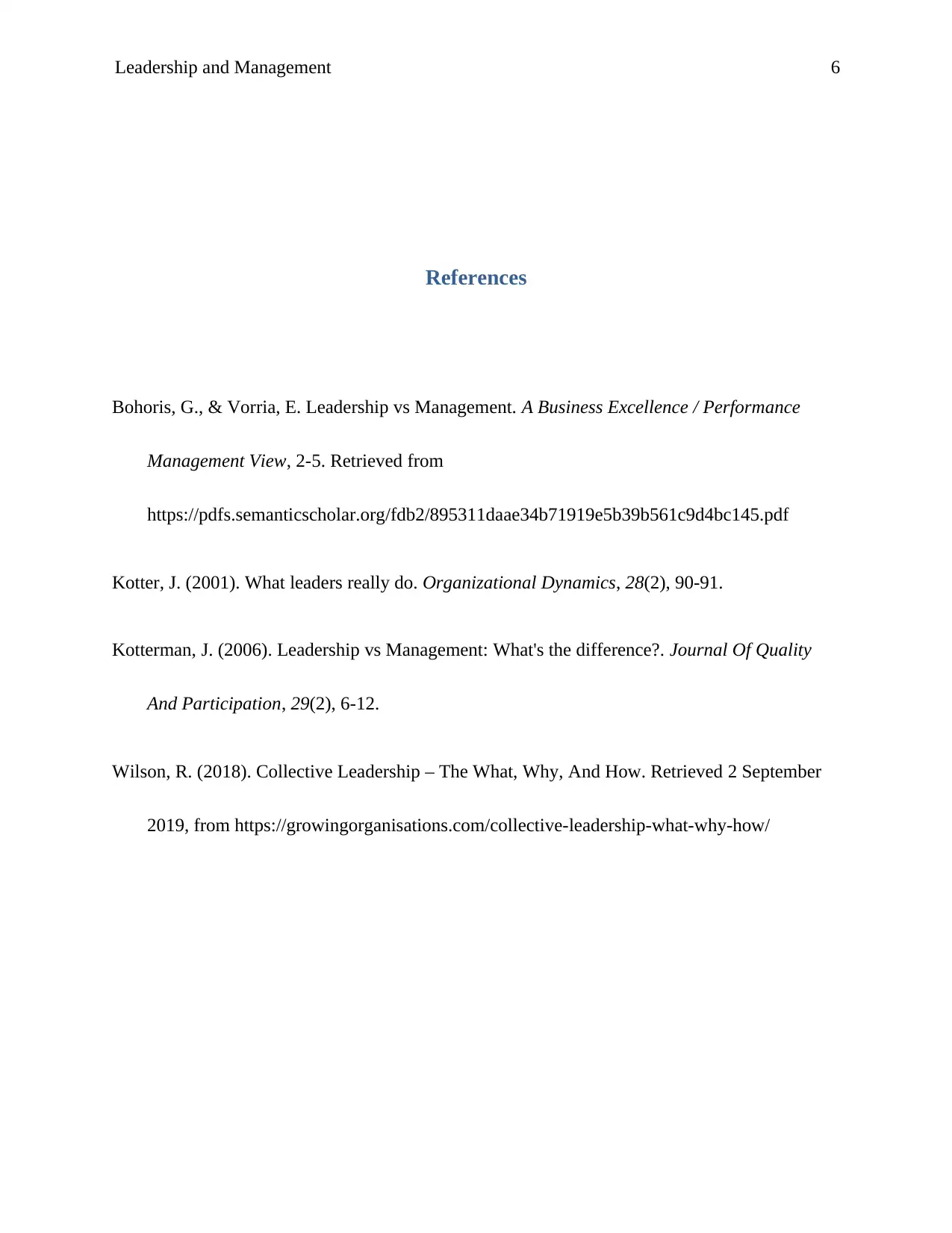





![[object Object]](/_next/static/media/star-bottom.7253800d.svg)